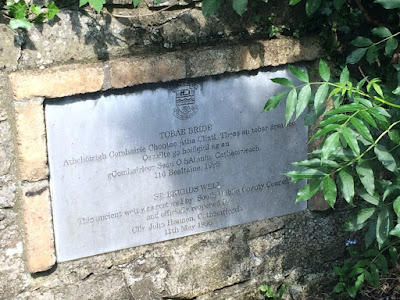Camac Park campground is actually a municipal campground (a pretty nice one, too) since it's part of the very large Corkagh Park in South Dublin. The Park originally was part of the Corkagh Demesne, a great house, gardens, park, etc. The House and most of the buildings are now long gone. It all came to the South Dublin city council in 1986 and has been transformed into a wonderful public park. Within its 300 acres are cycling tracks, many walks, 4 lakes (including two fisheries), many sports courts and fields (including the only purpose-built baseball diamond in Ireland), fields, forests, playgrounds, a fairy wood, a children's zoo, a rose garden, an arboretum, many fine old specimen trees, and the campground. We thought we'd just go for a walk one day, not knowing there was far more beyond the fields and walking paths by the campground entrance.
 |
Apparently a rent-a-fairy sort of scheme; at least they're Irish
fairies, not Disney |
 |
| Thus; the fairies are the ones with the wings, I presume |
 |
One of the two fishing ponds, this one for the coarse fish (the
other for trout) |
 |
| In the parklands |
 |
| The place laced with gorgeous paths |
 |
| A giant old Copper Beech |
 |
| In the large rose garden |
 |
| Things coming along well |
 |
| In the children's zoo |
 |
| Extremely rare striped Irish pig |
 |
Part of the Famine Memorial Arboretum: specimen trees from
each of the continents to which the Irish fled the Famine |
 |
| The carnival setting up next door: time to move on |
























































